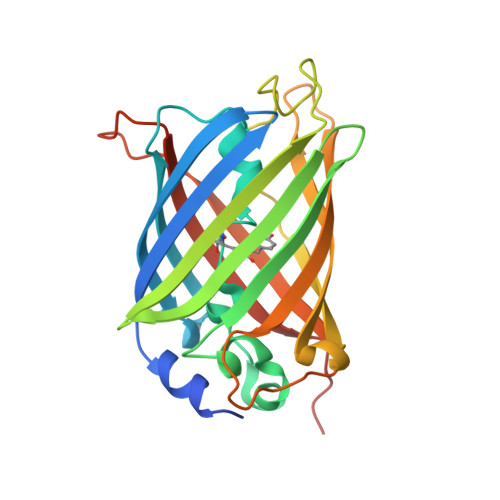The designability of protein switches by chemical rescue of structure: mechanisms of inactivation and reactivation.
Xia, Y., DiPrimio, N., Keppel, T.R., Vo, B., Fraser, K., Battaile, K.P., Egan, C., Bystroff, C., Lovell, S., Weis, D.D., Anderson, J.C., Karanicolas, J.(2013) J Am Chem Soc 135: 18840-18849
- PubMed: 24313858
- DOI: https://doi.org/10.1021/ja407644b
- Primary Citation of Related Structures:
4LQT, 4LQU - PubMed Abstract:
The ability to selectively activate function of particular proteins via pharmacological agents is a longstanding goal in chemical biology. Recently, we reported an approach for designing a de novo allosteric effector site directly into the catalytic domain of an enzyme. This approach is distinct from traditional chemical rescue of enzymes in that it relies on disruption and restoration of structure, rather than active site chemistry, as a means to achieve modulate function. However, rationally identifying analogous de novo binding sites in other enzymes represents a key challenge for extending this approach to introduce allosteric control into other enzymes. Here we show that mutation sites leading to protein inactivation via tryptophan-to-glycine substitution and allowing (partial) reactivation by the subsequent addition of indole are remarkably frequent. Through a suite of methods including a cell-based reporter assay, computational structure prediction and energetic analysis, fluorescence studies, enzymology, pulse proteolysis, X-ray crystallography, and hydrogen-deuterium mass spectrometry, we find that these switchable proteins are most commonly modulated indirectly, through control of protein stability. Addition of indole in these cases rescues activity not by reverting a discrete conformational change, as we had observed in the sole previously reported example, but rather rescues activity by restoring protein stability. This important finding will dramatically impact the design of future switches and sensors built by this approach, since evaluating stability differences associated with cavity-forming mutations is a far more tractable task than predicting allosteric conformational changes. By analogy to natural signaling systems, the insights from this study further raise the exciting prospect of modulating stability to design optimal recognition properties into future de novo switches and sensors built through chemical rescue of structure.
Organizational Affiliation:
Department of Molecular Biosciences, ‡Department of Chemistry, §Protein Structure Laboratory, and ∥Center for Bioinformatics, University of Kansas , Lawrence, Kansas 66045, United States.
















